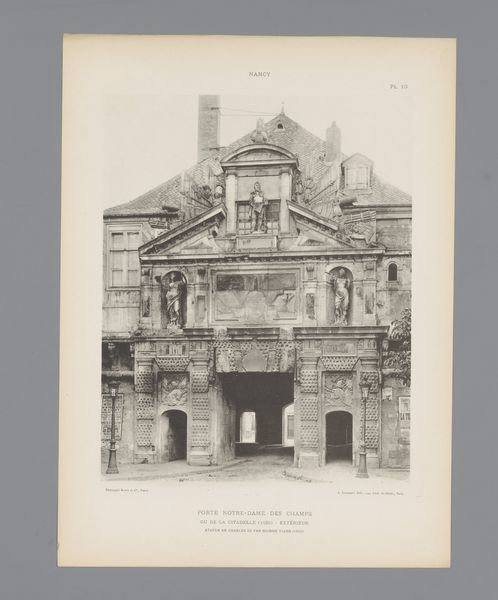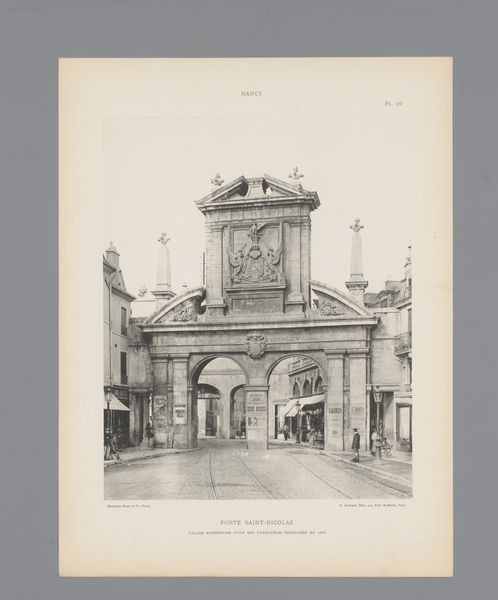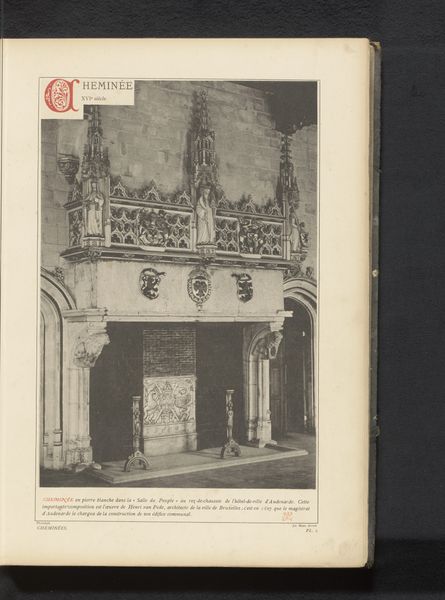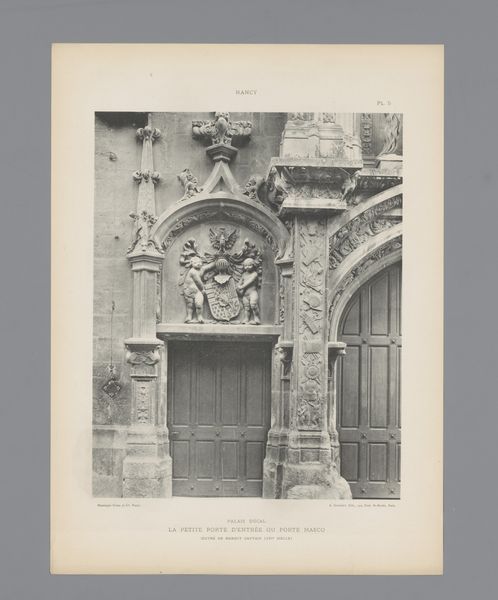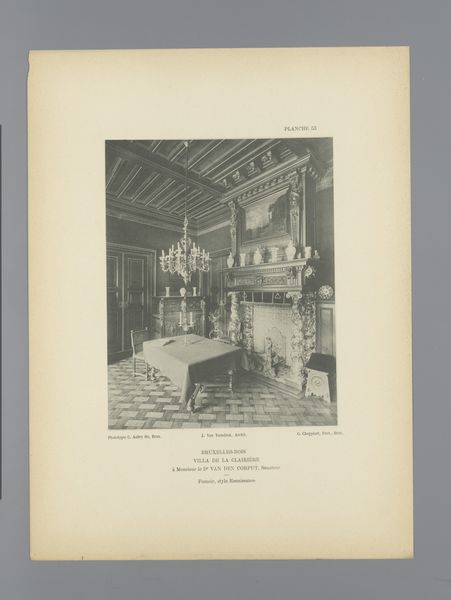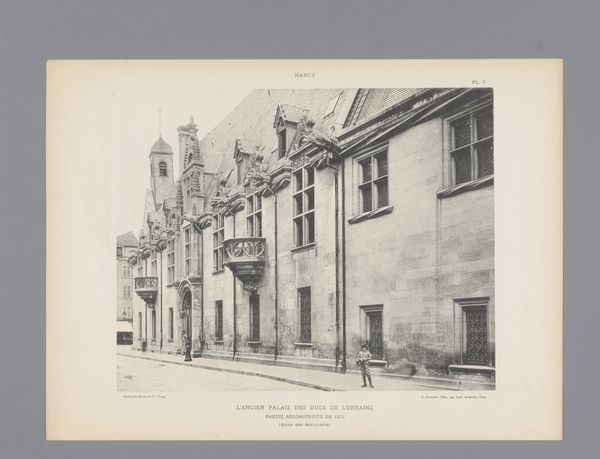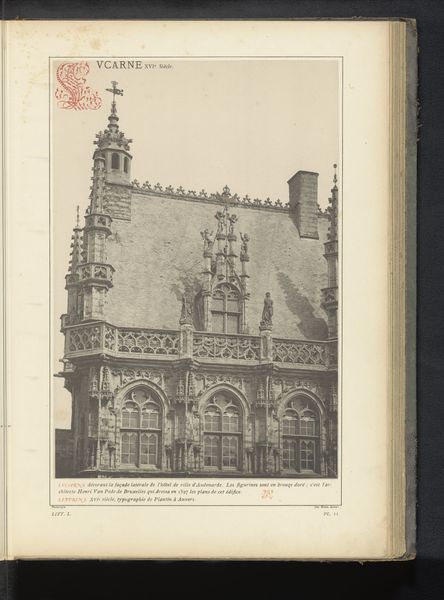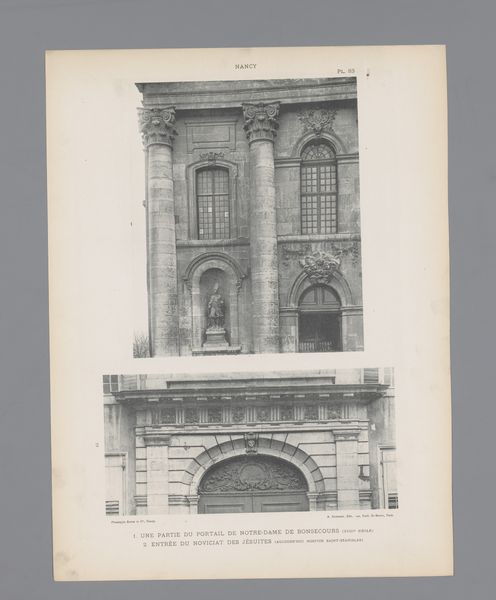
print, photography, architecture
# print
#
photography
#
cityscape
#
architecture
#
realism
Dimensions: height 401 mm, width 298 mm
Copyright: Rijks Museum: Open Domain
Editor: Here we have a photograph titled "Ingang van Musée Lorrain te Nancy", taken sometime before 1896. It showcases the entrance to what was once the Palace of the Dukes of Lorraine and is now the Musée Lorrain. There's something so stoic and imposing about this building captured in black and white. What can you tell me about this work in its historical context? Curator: Well, considering the subject matter and the fact that this is a photograph reproduced as a print, it's clear this image had a public purpose. We can explore how architectural photography became a tool for shaping public perception. Think about it: a stately building like this, the former Palace, photographed and widely circulated. It visually reinforces the power and permanence of the institutions housed within, and indeed the political entity. Editor: So, this image functions as more than just a record; it’s communicating specific ideas about power? Curator: Precisely. Look at how the entrance is framed—almost monumental. It speaks to the intentions behind showcasing this particular angle, what narratives were intended to attach to this museum's identity in relation to the older power structure. What audience were they hoping to reach? Editor: I hadn't considered the audience until now. Was this photo aimed more towards locals or to attract outsiders? Curator: That’s the crucial question. Considering the French inscription at the bottom and the wider availability of printed photographs, both audiences were likely intended. Its role was likely multifaceted: both bolstering local pride and attracting learned or aristocratic tourists interested in history and art. What do you think of the architectural details in relation to public appeal? Editor: Now I’m starting to consider it differently. It's not just an old building, but part of a carefully crafted message about heritage and national identity. Curator: Exactly! It is how an image is a player within societal constructs, telling the story of who has the authority to define and preserve what. So next time you visit a museum or admire an old building, you can now consider the role images such as this have had to enhance its significance and promote the establishment!
Comments
No comments
Be the first to comment and join the conversation on the ultimate creative platform.
